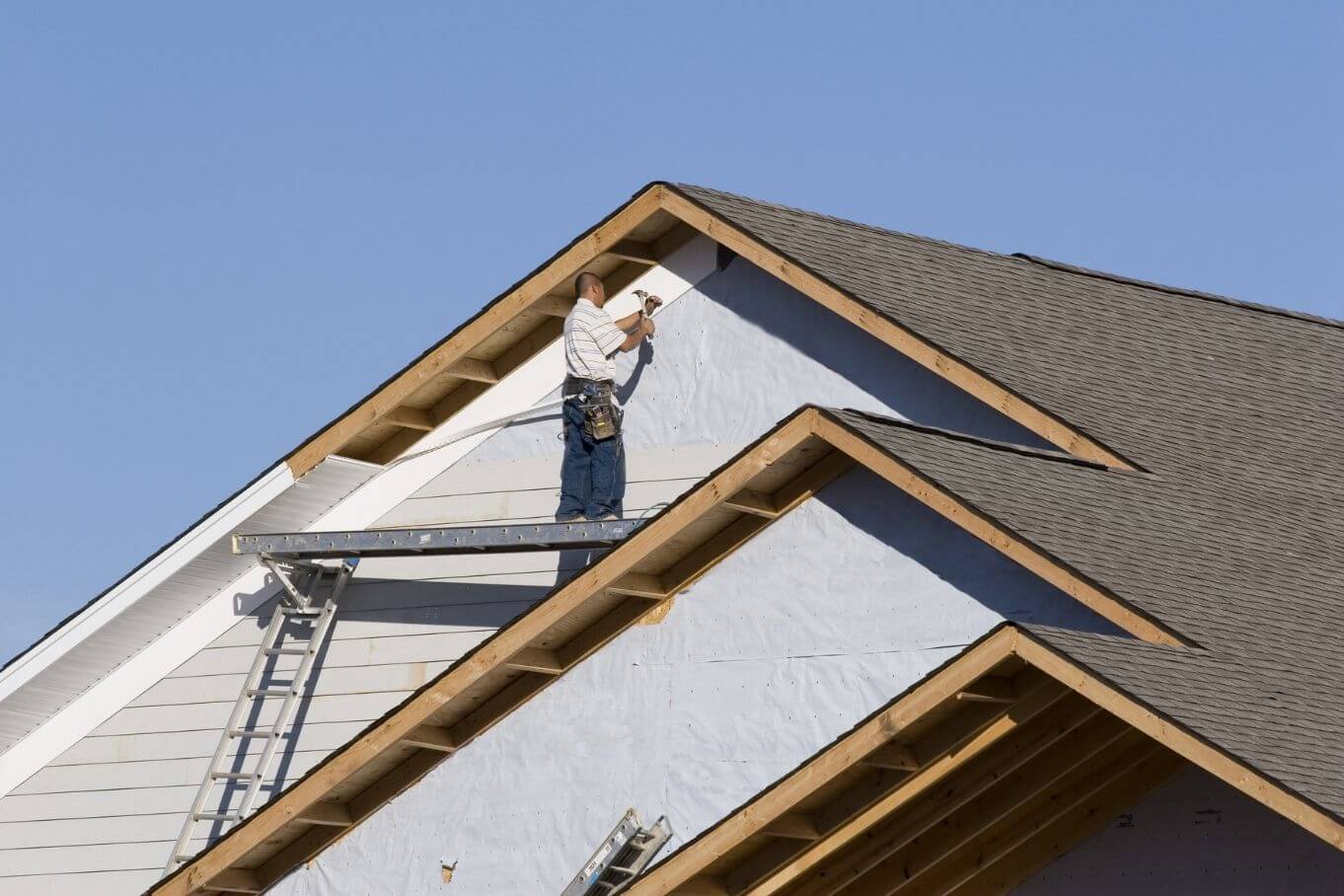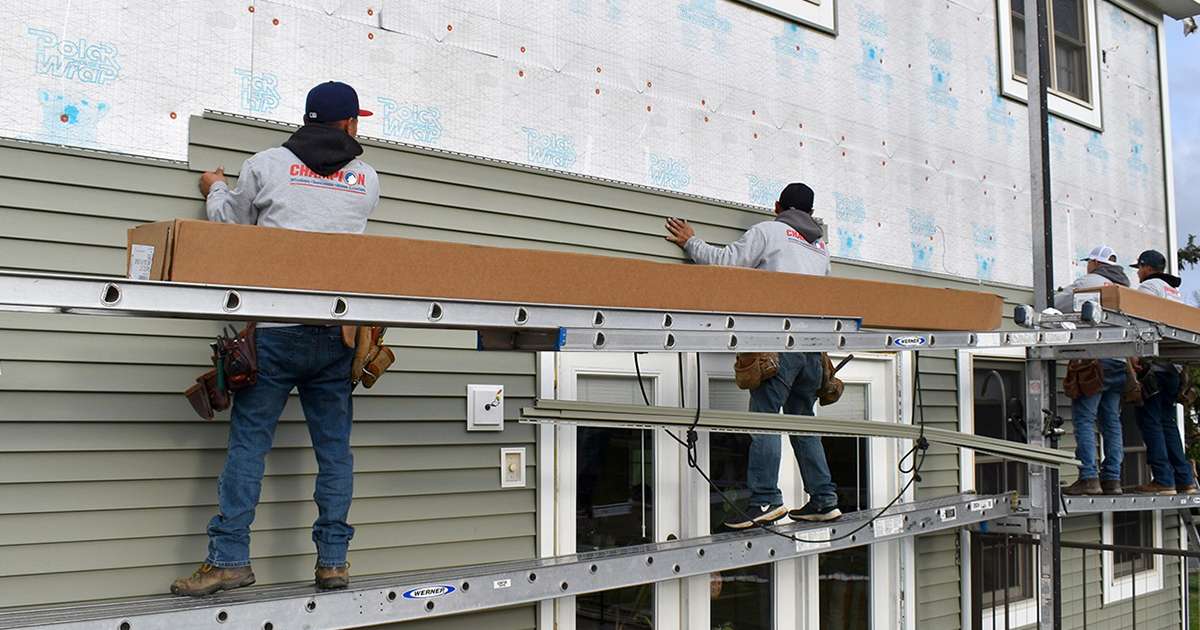Expert Morris Siding Contractor for Seamless and Long-Lasting Results
Expert Morris Siding Contractor for Seamless and Long-Lasting Results
Blog Article
The Vital Guide to the Various Kinds Of Home Siding and Their Special Benefits
In the world of home improvement, selecting the ideal home siding is an essential choice that influences both visual allure and practical efficiency. The variety of materials readily available, such as wood, plastic, fiber cement, metal, and block, each offer special advantages that deal with different requirements and preferences. Understanding these differences can considerably enhance the durability and value of a property - morris siding contractor. However, with so many alternatives to consider, which home siding material really attracts attention for your certain job? Discovering these options can bring about informed decisions that align with both design and usefulness.
Wood Siding
Timber home siding, a preferred option for residential outsides, uses an ageless visual that integrates natural charm with architectural honesty. This house siding material is available in numerous styles, consisting of clapboard, roof shingles, and board-and-batten, allowing home owners to tailor their façade to match their design choices. Timber home siding is generally crafted from long lasting types such as cedar, redwood, or want, which are known for their durability and capability to withstand environmental stressors.
Among the key benefits of wood house siding is its excellent insulation buildings, which can add to energy performance and lower home heating costs. In addition, wood house siding is biodegradable, making it an eco friendly option when sourced sustainably. Normal maintenance, including paint or staining, can lengthen its life-span and enhance its appearance, allowing homeowners to maintain the natural beauty of the timber.
Nonetheless, prospective disadvantages consist of vulnerability to parasites, rot, and climate damage, requiring adequate therapy and maintenance - morris siding contractor. Despite these concerns, when properly looked after, timber house siding can give a durable and stunning option that enhances the personality of a home while using a warm, inviting environment

Plastic Exterior Siding
Plastic house siding has actually emerged as a leading selection for homeowners looking for a low-maintenance exterior choice that incorporates durability and affordability. This flexible product is crafted from polyvinyl chloride (PVC), making it resistant to different climate condition, including moisture and UV rays. As a result, plastic home siding does not warp, rot, or discolor, ensuring long-lasting visual appeal.
Among the main advantages of vinyl exterior siding is its extensive series of designs and shades, allowing homeowners to accomplish the desired search for their residential property without the demand for frequent repainting. Furthermore, plastic exterior siding is very easy to set up, which can significantly minimize labor expenses throughout building or renovation jobs.
Plastic home siding additionally adds to energy efficiency. Many options attribute insulation support, which enhances thermal efficiency, aiding to maintain comfortable indoor temperatures and potentially lowering energy bills. Its smooth surface area facilitates very easy cleansing, requiring only periodic cleaning with a yard pipe to remove dust and debris.
Fiber Concrete Home Siding
Fiber cement home siding has obtained traction among home owners and home builders alike due to its remarkable combination of toughness and aesthetic adaptability. Composed of a mix of sand, cellulose, and cement fibers, this siding option is engineered to withstand severe climate condition, including high winds, hefty rainfall, and this hyperlink temperature fluctuations, making it a durable option for household outsides.

One of the key advantages of fiber concrete home siding is its resistance to insects, such as termites, and its non-combustible nature, offering boosted fire security. morris siding contractor. Furthermore, it is available in a vast selection of shades, appearances, and styles, permitting property owners to achieve their desired aesthetic without giving up efficiency
One more benefit is its low upkeep demands; fiber cement home siding typically calls for paint or discoloration every 5-10 years, which is much less constant than various other materials. Its longevity contributes to a lower overall cost of possession, as it decreases the demand for constant fixings or replacements.
Ultimately, fiber cement home siding stands for an outstanding investment for those seeking a durable, attractive, and functional exterior option, integrating both type and function to enhance the home's curb charm.
Metal House Siding
The allure of steel siding hinges on its durable durability and modern visual appeal, making it a favored option for contemporary architecture. Readily available in products such as light weight aluminum and steel, metal home siding offers a series of finishes and shades, allowing home owners to attain a personalized look that complements their layout vision.

Power effectiveness is another significant benefit, as numerous steel home siding items are made with insulation alternatives that aid regulate interior temperatures. This can cause reduced power costs with time. Furthermore, metal house siding is typically recyclable, making see it an eco-friendly selection for sustainability-minded home owners.
The installation process for steel house siding can be relatively simple, resulting in a quicker turnaround time for building tasks. Overall, metal house siding integrates functionality and design, making it a practical alternative for those looking for a aesthetically enticing and enduring outside surface.
Brick and Rock House Siding
Brick and stone home siding stands apart as a classic selection that enhances the visual charm of any type of home. Understood for their longevity and reduced upkeep, these products offer an extraordinary return on financial investment while elevating the residential property's aesthetic charm. Readily available in different shades, appearances, and patterns, brick and stone can be tailored to match diverse building styles, from typical to modern.
Among the primary advantages of block and rock home siding is their energy performance. Both products possess natural protecting buildings that assist regulate indoor temperatures, potentially lowering home heating and air conditioning expenses. Additionally, they offer premium fire resistance compared to various other siding choices, adding to boosted safety and security.
One more benefit is their longevity. Brick and rock can last for years, often needing very little maintenance past periodic cleansing. Unlike wood exterior siding, they are resistant to pests and rot, making sure a long-lasting exterior that withstands the aspects.
Conclusion
In summary, the choice of house siding dramatically affects a home's aesthetic charm, power efficiency, and maintenance demands. Each kind of exterior siding-- whether wood, vinyl, fiber metal, concrete, or brick and rock-- supplies one-of-a-kind benefits customized to different house owner preferences and environmental conditions.
One of the key advantages of wood exterior siding is its superb insulation homes, which can add to power performance and reduced home heating expenses. Furthermore, wood exterior siding is naturally degradable, making it an eco pleasant option when sourced sustainably.One of the primary advantages of steel Continued exterior siding is its resistance to numerous ecological variables.Energy performance is one more considerable benefit, as lots of steel house siding products are made with insulation options that assist manage interior temperature levels. Each type of siding-- whether timber, plastic, fiber concrete, brick, or steel and rock-- offers one-of-a-kind advantages tailored to various home owner preferences and ecological conditions.
Report this page